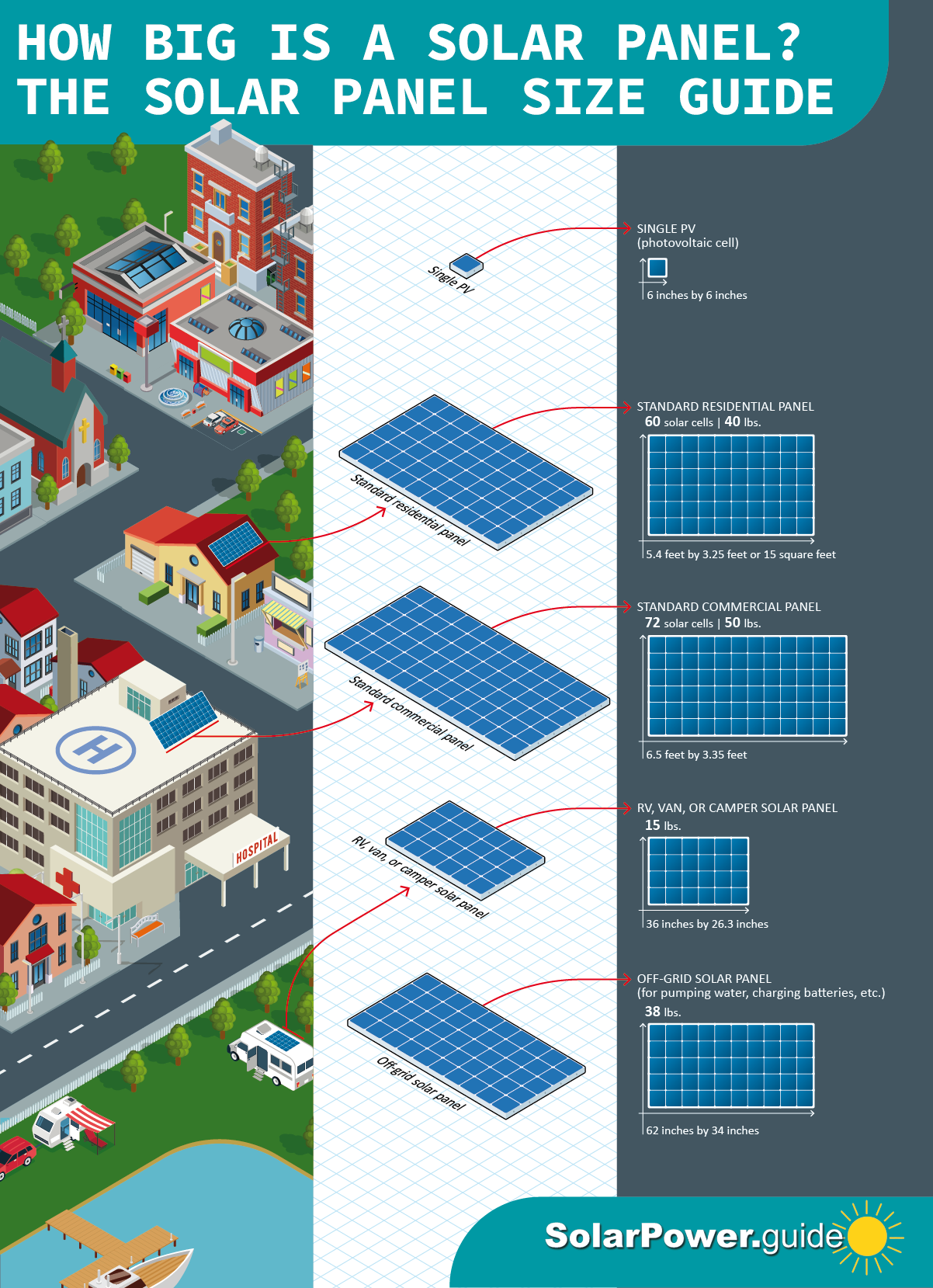How Big is a Solar Panel? The Solar Panel Size Guide
In 2020, the International Energy Agency announced that solar energy has become the “cheapest electricity in history.” So it’s no wonder that solar energy is the fastest-growing electricity source in the United States! If you’ve been thinking about making the switch to solar, check out this comprehensive solar panel size chart from Solar Power Guide that sheds light on the average size of solar panels, how many cells solar panels have, and how much solar panels weigh: It should help you to integrate solar panels into your home or business with confidence!
Click the below image to view full-size.

Simply copy and paste the code from the box below to share.
How Big Is a Solar Panel?
What is the most common solar panel size for homes? For a residential solar panel, size is fairly consistent across manufacturers: 65 inches (1.65 meters) by 39 inches (1 meter) is the average solar panel size that you find on the roofs of houses. That is about 5.4 feet long and 3.25 feet wide, which equates to around 15 square feet. This is typically regarded as the standard solar panel size How thick is a solar panel? That also varies depending on manufacturer; solar panel thickness typically ranges between 1.25 inches (32 millimeters) and 1.6 inches (40 millimeters). How much does a solar panel weigh? Most solar panels weigh around 40 pounds because they are constructed to be able to endure constant exposure to the elements. You may be wondering, “Can my roof support solar panels?” Chances are good that your roof will be able to support the weight of solar panels, but a reputable solar panel installer will ensure that your roof is safe for solar panels. They will also take the weight of the average snowfall in your area into account.
How Big Is a Commercial Solar Panel?
The average size of a commercial solar panel, such as those you would see on top of a hospital or in a field, is about 6.5 feet (2 meters) by 3.35 feet (1 meter), or 78 inches by 39 inches. They contain a system of at least 72 solar cells and can weigh around 50 pounds.
How Many Cells Does a Solar Panel Have?
First, let’s explore the size of a solar cell. A single photovoltaic cell is 6 inches by 6 inches. A solar panel is comprised of these photovoltaic cells arranged in configurations of 32, 36, 48, 60, 70, and 96 cells. How many cells are in a 300W solar panel? A 300W solar panel is the typical size for a residential solar panel, and these solar panels usually have 60 solar cells. Commercial solar panels or other large-scale projects most commonly have 72 or more solar cells.
Does the Size of a Solar Panel Matter?
Solar panel size does matter: The more solar cells a panel has, the more energy it can absorb from the sun. However, solar panels can vary in terms of efficiency, so the key factor when choosing solar panels should be their power rating. Most residential panels range between 250 and 400 watts per hour. As solar technology advances, the size of solar panels is decreasing as efficiency increases. It’s exciting to imagine just how bright the future of solar technology is!
Solar Panel Size Chart
| Type of Panel | Size |
|---|---|
| Single PV (photovoltaic cell) | 6 inches by 6 inches |
| Standard residential panel |
5.4 feet by 3.25 feet or 15 square feet
60 solar cells 40 pounds each |
| Standard commercial panel |
6.5 feet by 3.35 feet
72 solar cells 50 pounds each |
| RV, van, or camper solar panel |
36 inches by 26.3 inches
15 pounds each |
| Off-grid solar panel (for pumping water, charging batteries, etc.) |
62 inches by 34 inches
38 pounds |
If you have any questions about our solar panel size chart, please don't hesitate to ask!